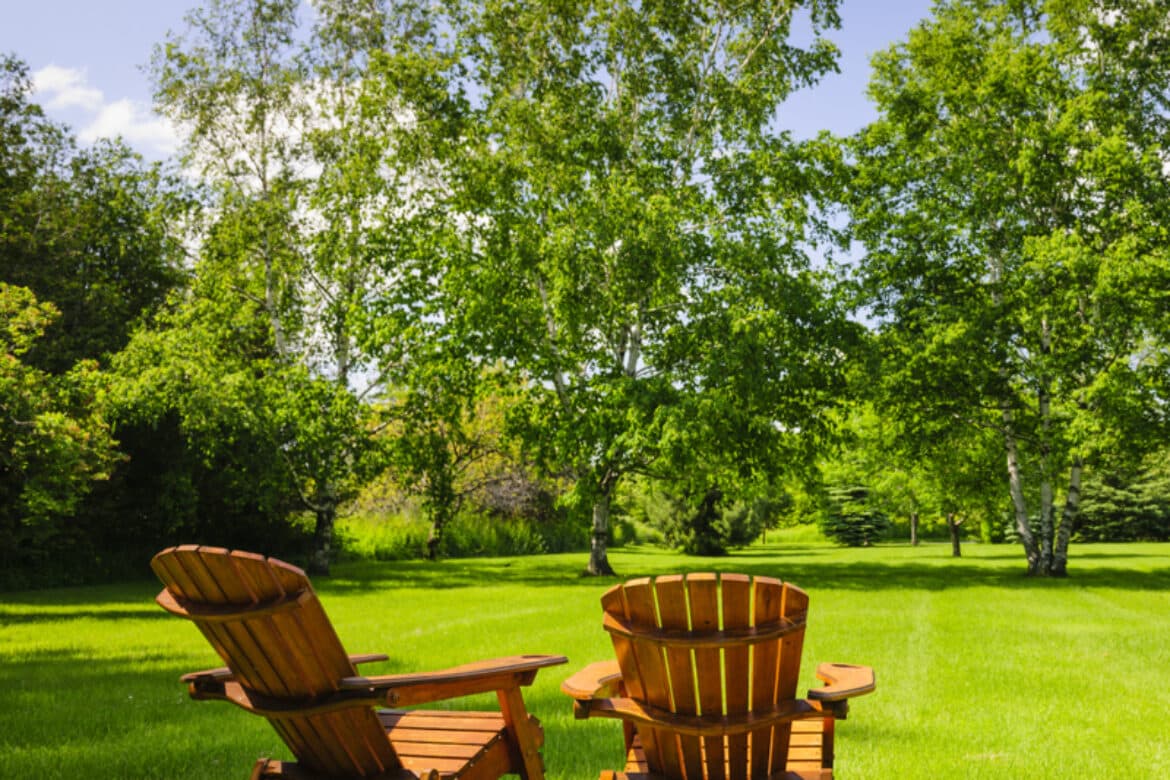
March 14, 2022 | Seasonal Dangers | Kylie Kelty
Spring is here in Louisville! As the green grass and blossoms return, be sure to keep an eye out for these common fungal diseases as you go about your spring yard maintenance.
Brown patch is one of the most common fungal diseases affecting Kentucky lawns. It typically becomes active in late spring or summer when the temperatures are consistently above 70, and the air is saturated with moisture. Brown patch starts as circular patterns turning your blades from purplish-green to dark brown. In the morning, when the grass is still wet, it’s common to see “smoke rings” of black or gray grass around the border of the brown patches. If the disease is allowed to persist, it can weaken your grass, causing weeds and pests to invade, and eventually, your blades can wither and die.
The best way to prevent brown patch from occurring is through proper lawn practices, including frequent mowing and gradually reducing mowing height to 2 1/2 inches, irrigating only in the morning when necessary, and removing all grass clippings.
Unlike other lawn fungi, red thread doesn’t harm turfgrass. However, it does alter the appearance as it will make your lawn look as if someone’s woven red thread throughout. On closer inspection, you’ll find that the reddish threads look like antlers or thorns projecting between the blades of grass. As you can imagine, this ruins the appearance of that lush green lawn we all dream of. Fortunately, red thread responds well to fungicide applications. You can prevent this annoying disease from returning by following good lawn maintenance practices – namely, regular fertilization. Healthy lawns are better able to defend themselves against diseases and pests.
Snow mold gets its name because it dwells under the layers of snow on our lawns and goes unnoticed until spring. This fungus results in patches of dead grass, and some people may experience allergic reactions when exposed. There are two types: pink snow mold (Microdochium nivale) and gray snow mold (Typhula incarnate). Both are unaffected by the cold and can grow on all types of lawn grasses. As you might have surmised, gray snow mold has a white or bleached appearance, while pink snow mold has a pinkish hue. Typically, gray snow mold creates dead patches that could be up to several feet in diameter, while pink snow mold patches are no more than a foot in length.
If your lawn looks like someone’s spilled baby powder across it, you’ve probably got powdery mildew. This fungal problem shows up in late spring and can affect not only our turfgrass but also the leaves of trees, shrubs, and flowers.
Most lawn diseases create solid circles of dead grass. Necrotic ring breaks the mold. Instead, it appears as donut-shaped rings, where the center of the grass remains intact. Necrotic ring loves cool-season grasses, and once it’s been in your lawn, your turfgrass may need some help getting back on its feet.
As leaf spot progresses, it creates circular patches on the leaves of your trees and shrubs. These spots start out tan but will gradually turn to brown and then black, causing the leaves to die and fall off the tree well before autumn. If you’ve discovered a few such leaves on your ornamental plants, it’s understandable that you’d be upset. But don’t panic! You can remove the infected leaves and take a wait-and-see approach. Enlisting in a tree and shrub care program like the one Farison’s Lawn Care offers can help keep your trees and shrubs healthy and resist diseases such as leaf spot.
Tar spot is usually not detrimental to the overall health of the trees. However, they will cause leaves to drop earlier than they would naturally. You’ll first notice tar spots in late spring or early summer, and infected leaves develop light green or yellow-green spots. During mid to late summer, black tar-like structures form on the upper surface of leaves within the yellow spots, which is where the disease gets its name. These spots are about 1/4 to 3/4 inches in diameter. The most common species are Rhytisma acerinum and R. punctatum.
Oak wilt is a serious tree fungus that can kill certain oak species in as few as six weeks. The disease easily transfers from one oak tree to another through insects and root grafts. This fungus disrupts the flow of water through the tree, eventually killing it. Unfortunately, there is no cure for this disease once a tree is sick. However, you can prevent it by applying regular dormant oil applications to your trees. This will kill any pests that might land on the tree while carrying the fungus. You should also avoid pruning trees during spring and summer. This creates an open wound, which is susceptible to fungal spores. The best time to prune oak trees is during the winter months when they have gone dormant.
When you hire Farison Lawn Care, you won’t have to worry about fungal diseases on your lawn. Our fungicide plans help prevent these annoying diseases before they appear in your yard. We’re happy to add this beneficial treatment to your lawn care program or as a separate treatment, as needed. To learn more or schedule an appointment, give us a call at (502) 245-9422 or you can reach us through our online form here.
Don’t forget to check out our blog page! You can find more articles on how to maintain your yard, care for trees and shrubs, and keep pests away!
Like us on Facebook: https://www.facebook.com/FarisonLawnCare/
Follow us on Instagram: https://www.instagram.com/farisonlawncare/
Watch us on YouTube: https://www.youtube.com/channel/UC_We1VUXrrqwHUoA9MoHUjw
love what we do?